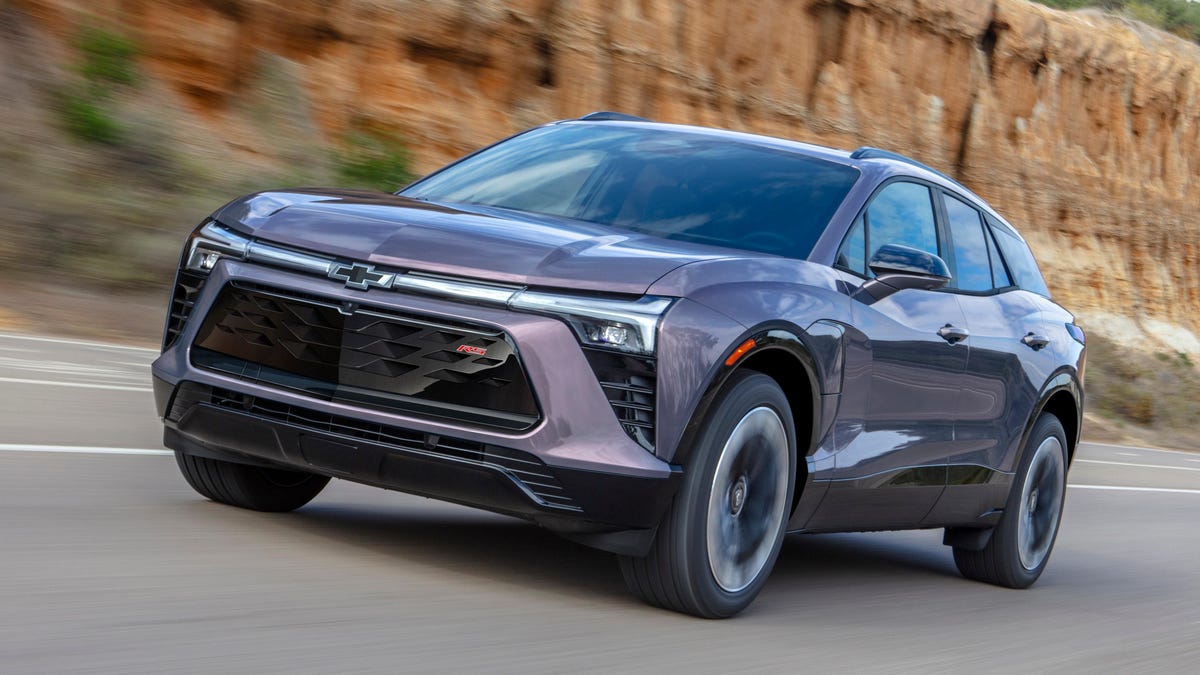When InsideEVs’ Kevin Williams got his hands on a 2024 Chevrolet Blazer EV, he had big plans for it. Starting in Columbus, Ohio, he was going to take it on a 471-mile road trip to Raleigh, North Carolina, testing out its real-world range, charging speed, comfort and driving experience. Considering that vehicles built on General Motors’ Ultium platform have had plenty of problems since it was first rolled out, he knew it might not be a hassle-free trip, but as he pointed out, the Blazer EV was recently named MotorTrend’s SUV of the Year, so it couldn’t be that bad, right?
Wrong. The first problem started before the road trip even began. While topping it up at a nearby charger, the car insisted on playing the music at full volume every time it reconnected with his phone via Bluetooth. Not long after crossing into West Virginia, the infotainment screen died. He was able to reboot it, but from then on, both it and the gauge cluster kept flickering on and off. Still, the car was drivable, so he kept going.
When he stopped to charge in Wytheville, however, the real problems began. Initially, the car started charging like normal, but a couple of minutes later, he got a notification that the car was fully charged.
“It’s probably just some EA nonsense,” I said to myself. Electrify America chargers can be finicky, they’ve done this to me before on other makes and models, randomly disconnecting in the middle of a perfectly good charge. Without re-entering the car, I unplugged and re-plugged the Blazer EV. The charging restarted, but Electrify America said the Blazer EV would only draw 3 to 5 kW. Strange, but I was hungry. I figured the Blazer EV would ramp up speed later, so I walked away to get lunch.
Throughout my 20-minute lunch, the Blazer EV never crested more than 5 kW. I marched downhill back to the charging station, figuring it was more EA problems. In the meantime, the EQS had finished charging and left the station, leaving his presumably working charging station all ready for the Blazer EV.
I pressed “Stop Charging” on the now-working infotainment system (accepting an incoming call made the screen work again!), and then depressed the brake to start the car, ready to move the Blazer EV one stall over to a better working charger.
Before I could move the car, I looked down at the plethora of lights and messages in front of me. The car’s gauge cluster was lit up like a Christmas tree. “Service Vehicle Soon.”
With no way to recharge the Blazer EV in a remotely reasonable time and all the warning lights lit up, it didn’t make sense to keep driving. If the car completely broke down in a rural area, that would only make the situation worse. He took it to the nearest Chevrolet dealer for GM to take back to Milford Proving Grounds in Michigan and hopefully figure out what went wrong. That might take a while, but GM already sent InsideEVs a statement that read:
We have found that there are current fluctuations across public DC fast chargers, with a small number which can exhibit more than others. When fluctuations are more extreme, sensors within the vehicle may see that as a fault and reduce the rate of charging. We have identified the cause and have addressed it in an upcoming software update that will be available soon. To ensure our customers have a seamless experience, our team continues to work diligently with multiple charging companies to ensure compatibility with all our vehicles.
We reached out to Chevrolet for a comment and received a very similar response:
We have found that there are current fluctuations across public DC fast chargers, with a small number which can exhibit more than others. When fluctuations are more extreme, sensors within the vehicle may see that as a fault and reduce the rate of charging. We remain focused on delivering the best customer experiences. We have worked quickly to diagnose the issues reported by InsideEVs and are addressing them with an upcoming software update.
Now head on over to InsideEVs to give the whole saga a read.

